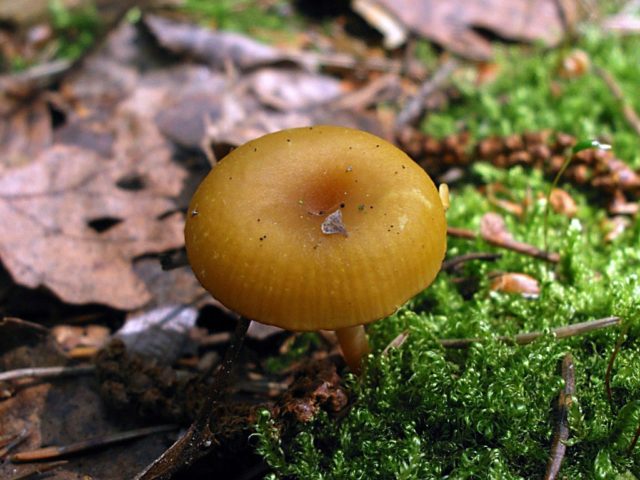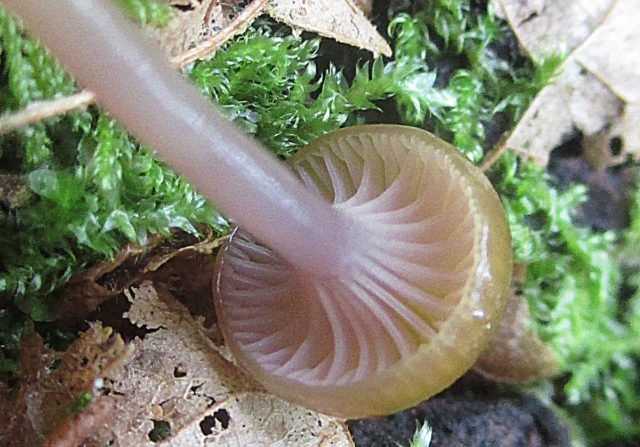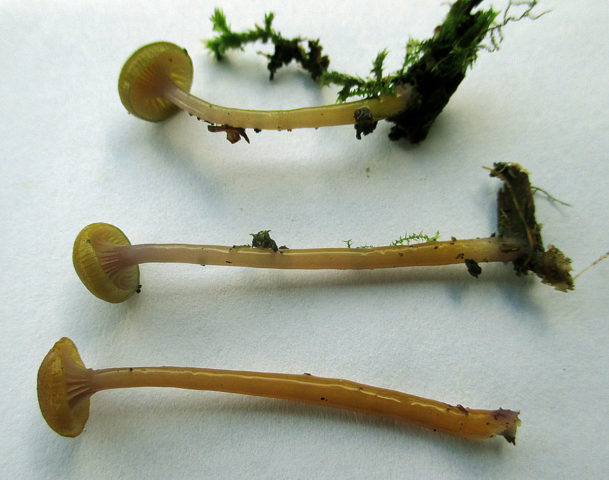Content
Chromozero blue lamellar is one of the many lamellar fungi found in Russian forests. A feature of this species is their growth on dead coniferous wood. By decomposing cellulose into simpler substances, these fungi contribute to the intensive cleansing of the forest from fallen trees.
Description of the blue-plate chromoser
Chromozero blue-plate (omphaline blue-plate) is a small mushroom of the Gigroforov family. It has a classic shape with a pronounced head and leg.
Chromoserum blue-plate is widespread in many countries, including in Russia.
Description of the hat
The blue-platinum omphaline's cap is a hemisphere with a diameter of 1-3 cm with a small depressed center. As the mushroom grows, the edges rise slightly, the shape becomes truncated-conical and flatter, and the depression in the center is more pronounced. The color of the cap of a young blue-plate omphaline can have various shades of ocher, yellow-orange, light brown; with age, its saturation decreases, and the color becomes olive-gray. The surface is sticky, slippery, mucous in wet weather.
On the back of the cap there are rather thick rare plates of 2 alternating types:
- truncated;
- descending, fused with the leg.
At the beginning of the life of the fungus, the plates are pinkish-purple, as they grow, they become more and more blue, and at the end of life - gray-purple.
Leg description
The leg of a blue-lamellar chromoser can grow up to 3.5 cm, while its diameter is only 1.5-3 mm. It is cylindrical, slightly thickening downwards, usually slightly curved. It is sticky to the touch, slimy, has a cartilaginous structure.
The color of the leg can be different, including shades of yellow-brown, yellowish-olive, beige with an admixture of purple. At the base of an adult mushroom, it is bright purple with a blue tint. The flesh of blue-lamellar chromoserum usually does not differ in color from the cap, it is thin, brittle, without a definite taste and smell.
Where and how it grows
Chromozero blue lamellar is found in coniferous and mixed forests in Europe and North America. Usually grows in the first half of summer, singly and in small clusters on dead coniferous wood.
A short video on how the blue-plate chromoserum grows in natural conditions can be viewed at the link:
Is the mushroom edible or not
In the literature, there is no exact information about the edibility or toxicity of this mushroom. A priori, blue-plate chromoserum is considered inedible. Moreover, because of its extremely small size, it has no commercial value.
Doubles and their differences
Chromozera syneplastinovaya bears some resemblance to dewy roridomyces. This mushroom can also be found in coniferous and mixed forests, where it grows on rotten wood, cones and fallen needles.Like omphaline blue-plate, dewy roridomyces begins to appear as early as May, but its fruiting lasts much longer and ends in late autumn.
The cap of this mushroom is ribbed, at first hemispherical, then prostrate, with a small dimple in the center, 1-1.5 cm in diameter. Its color is cream, brownish in the middle part. The stem is cylindrical, whitish, covered with mucus, slightly darker at the bottom, it can grow up to 6 cm.The main difference between these two types of mushrooms is in the structure and color of the cap, as well as in the complete absence of purple in color in dewy roridomyces.
Conclusion
Chromozero blue-plate is one of the many species of saprotrophic fungi, thanks to which the forest is cleared of dead wood. Due to their small size, mushroom pickers most often simply do not notice them, and they have no commercial value due to their low level of knowledge. However, their role for the forest is simply invaluable.












